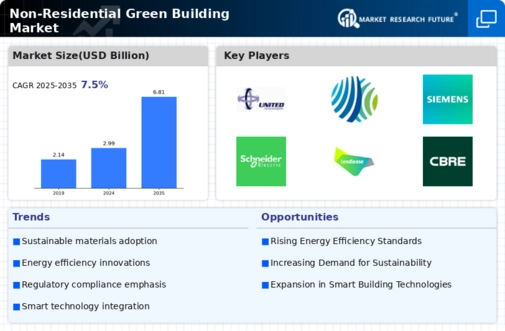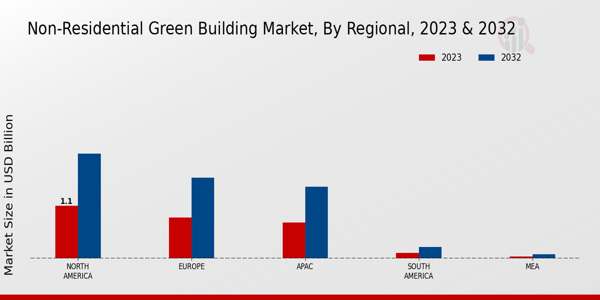The Non-Residential Green Building Market is increasingly becoming a focal point for innovation and sustainability as environmental concerns mount alongside urbanization and infrastructure development. This market encompasses a wide range of building types and construction practices aimed at reducing energy consumption, minimizing waste, and promoting sustainable materials. As regulations tighten and the emphasis on corporate social responsibility widens, companies are compelled to adopt eco-friendly practices and technologies.
Competitive dynamics are shifting as traditional building practices encounter disruption from solutions tailored for energy efficiency, sustainability, and regulatory compliance. Players in this space are not only competing on innovation and design but also on their ability to deliver reliable, efficient and environmentally friendly solutions, which are essential for gaining market share. The high demand for green building materials and technologies reflects an overall trend toward sustainable development, prompting companies to enhance their offerings and strategic positioning.United Technologies has made significant strides in the Non-Residential Green Building Market, leveraging its diverse portfolio and advanced technology solutions.
The company’s strength lies in its commitment to innovation and sustainability, positioning itself as a leader in building technologies that prioritize energy efficiency and reduced carbon footprints. United Technologies focuses on integrating smart building systems, which seamlessly enhance operational performance while minimizing environmental impacts.
The company's extensive research and development initiatives underline its proactive approach to meet evolving consumer demands and regulatory requirements. Furthermore, United Technologies capitalizes on its presence, effectively tapping into emerging markets while fostering strategic partnerships that enhance project execution and sustainability initiatives. This multi-faceted approach allows United Technologies to maintain a robust competitive stance within the non-residential green building sector.Johnson Controls has established itself as a formidable player in the Non-Residential Green Building Market through its comprehensive range of technologies and services designed to optimize building performance.
The company’s dedication to energy efficiency and sustainability is apparent in its innovative building management solutions, which help clients achieve operational efficiency and reduce energy costs.
Johnson Controls utilizes advanced data analytics and IoT technologies to create smart building environments that are responsive to user needs while minimizing energy consumption. Its focus on sustainability is supported by a deep commitment to compliance with environmental standards, ensuring that its solutions align with the best practices in green building. Moreover, Johnson Controls demonstrates a strong market presence through its extensive network of projects, showcasing an ongoing commitment to developing sustainable habitats. By forging strategic alliances and investing in new technologies, Johnson Controls positions itself well to capture growth in the rapidly evolving non-residential green building sector.






















